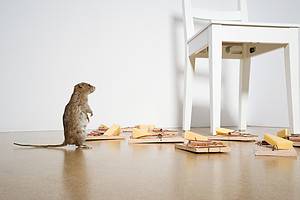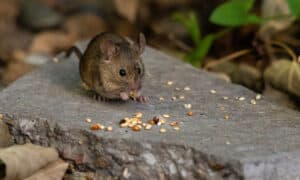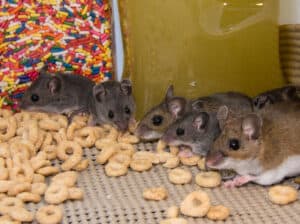Also known as groundhogs, woodchucks are large rodents that are common across North America. Although they can be a nuisance to farmers and gardeners, they actually play an important role in helping to maintain the ecosystem through the formation of their burrows. However, although they typically live in burrows, woodchucks are part of a group known as ground squirrels. Therefore, you may be asking yourself the question, “Can woodchucks climb trees?” In this article, we’ll discover the answer, and find out more about where woodchucks live and how they behave.
What Are Woodchucks?
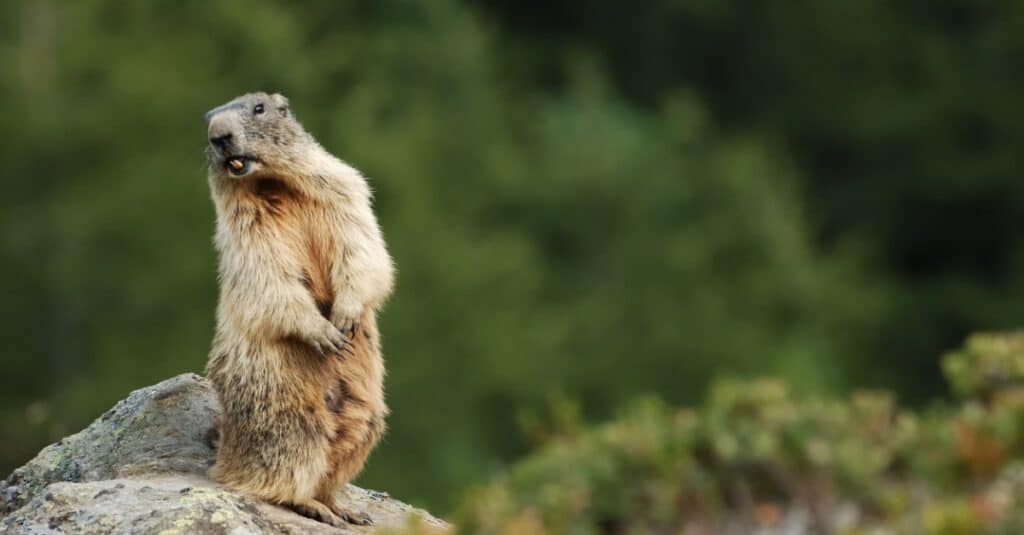
While they are part of the squirrel family, woodchucks are more like beavers.
©iStock.com/gilles_oster
Woodchucks are rodents in the Sciuridae family group, which is the squirrel family. They are part of the Marmotini tribe, which are ground squirrels. However, despite the name, they do not particularly look or act like squirrels. Instead, they are often described as looking more like beavers. Woodchucks have large bodies that are typically 16 to 27 inches long and weigh between four and 14 pounds. They also have short legs, which are adapted to digging, as well as short tails.
Like all rodents, woodchucks have incisor teeth that grow constantly throughout their lives. This means that they have to continually chew on things that will wear them down to prevent them from becoming too long for their mouths. Woodchucks are technically omnivores, but they tend to lean more toward herbivorous behavior. Their preferred diet includes fruit, nuts, plants, wild grasses, berries, and some agricultural crops. They also eat insects, snails, worms, eggs, and sometimes small birds, though. In the run-up to winter, woodchucks increase their daily food intake in preparation for hibernation. In some cases, they can even double their weight!
Are Woodchucks Able to Climb Trees?
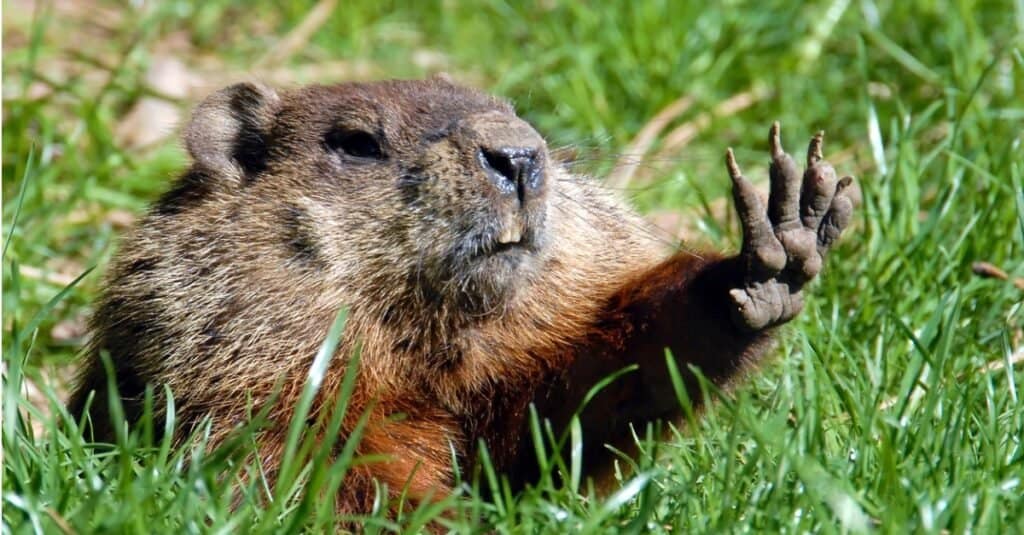
With their strong claws, typically reserved for digging, woodchucks can climb trees. They generally do so when trying to escape a predator.
©iStock.com/mirecca
Yes, woodchucks can climb trees! They typically only climb trees, though, when they are trying to escape a predator. Woodchucks have strong, robust claws, which they usually use for digging, but they can also use them to provide sufficient grip to clamber their way up trees when they need to.
Just because they can climb trees, though, doesn’t mean that they are willing to do it all the time. Woodchucks are primarily terrestrial animals and largely have everything that they need to survive on the ground. They live in burrows and are able to forage for pretty much all the food that they need on the ground. That’s not to say that they don’t clamber a little to reach those tasty berries or nuts that are just out of reach, just that climbing isn’t a regular thing for them.
Woodchucks are also very capable swimmers as their strong legs mean they can swim in a swift and easy manner. This means that they have another avenue of escape from predators if they need it. That said, there may be instances when woodchucks have to climb trees in order to escape a threat. This may be when they’re not close enough to their burrow to escape into it, or the trees are simply the closest and easiest way to escape. Woodchucks have quite a lot of predators, and these include coyotes, foxes, weasels, bobcats, and even black bears. So, given their nimble nature, the quickest way to escape these larger predators may be to simply scamper up a tree!
Where Do Woodchucks Live?
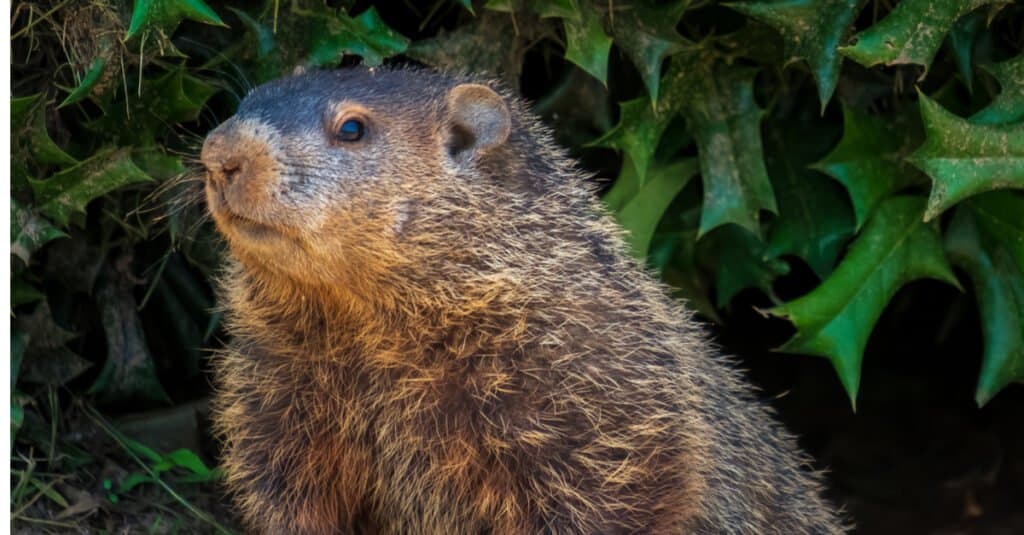
Woodchucks live in burrows in the ground, which they dig themselves.
©samray/Shutterstock.com
We’ve already mentioned that woodchucks have strong paws with sharp claws that they use for digging. This means that they are able to excavate large amounts of soil when they create their burrows. This is because woodchucks live in extensive burrow systems, which can be up to 40 feet long. They primarily live near good sources of food, so woodchucks will create their burrows in pastures, forests, and woodland edges.
Woodchucks are often called “habitat engineers” because there are plenty of other animals that use their burrows for shelter — such as amphibians, reptiles, and sometimes smaller rodents. They also help to improve and maintain the health of the soil in their chosen habitat. This is because they move the soil around as they dig, which helps to aerate it as well as mix nutrients into it. Furthermore, their burrows are typically only two to six feet below the surface. This means that oxygen can enter the burrows and get into the soil where plant and tree roots are.
Reproduction
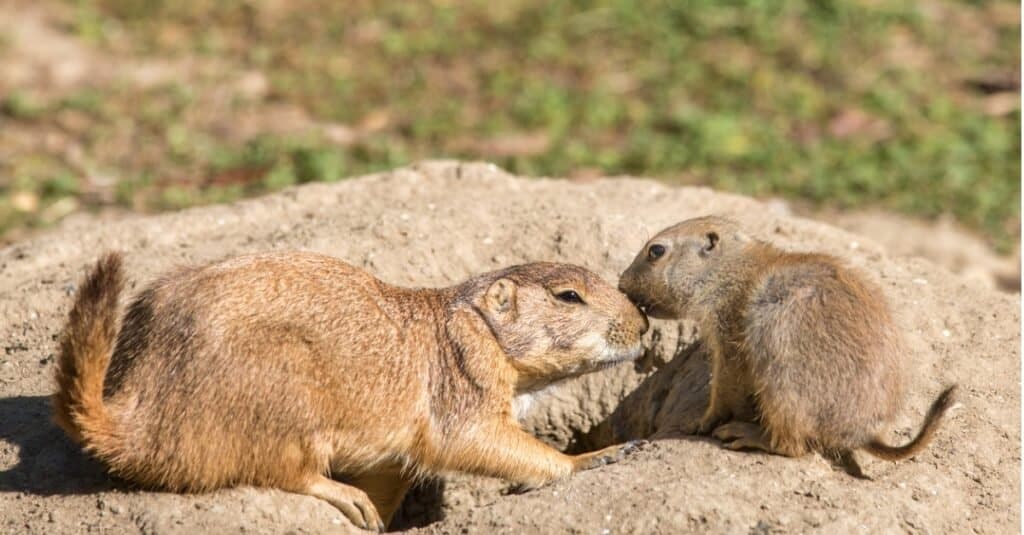
Woodchucks are particularly solitary animals, with males staying with females only for the majority of their gestation period. Afterward, the pups stay with their mother only for a couple of months.
©iStock.com/Natalia SERDYUK
With such an extensive burrow system, you’d probably expect woodchucks to live in large family groups; however, they are actually solitary animals and typically live alone. In fact, they only seek out other woodchucks during the breeding season, which is in March and April. Although the male remains with the female for the majority of the 32-day gestation period, he will typically leave the burrow before she gives birth.
Woodchucks give birth to only one litter per year, which consists of an average of four to six babies. The juveniles remain with their mother for around two months. After this, they become completely independent and leave to make their own burrow. This usually occurs by late August, and by then, it’s time for woodchucks to begin preparing for winter. As we mentioned earlier, woodchucks hibernate for the winter, and this typically occurs from October to March.
The photo featured at the top of this post is © Andrea Izzotti/Shutterstock.com
Thank you for reading! Have some feedback for us? Contact the AZ Animals editorial team.



